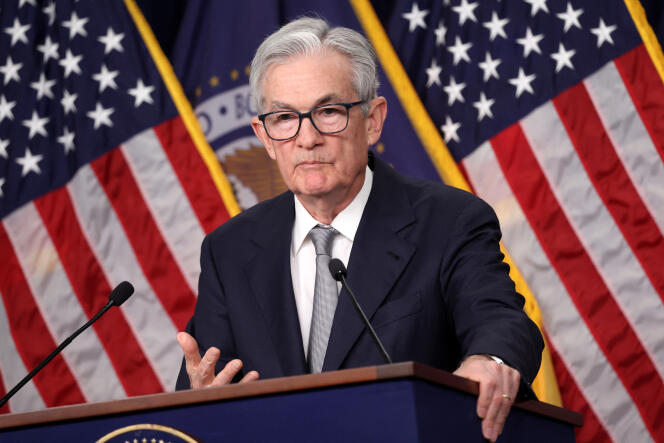For the second time in a row, the Federal Reserve, the American central bank, left its rates unchanged on Wednesday 1er November, but she did not rule out raising the rent on the money again after this break. Short-term rates, which were still almost zero at the end of the Covid-19 crisis in March 2022, are between 5.25% and 5.5%, a record for twenty-two years.
“To determine the extent of additional policy tightening that might be appropriate to reduce inflation to 2 percent, the committee will take into account the cumulative tightening of monetary policy, the lags with which monetary policy affects economic activity and the inflation, as well as economic and financial factors »writes the central bank in its press release.
Despite the rise in rates, the American economy continues to show striking strength, with an annual growth rate of 4.9% in the third quarter, boosted by household consumption and unemployment limited to 3.8%. .
Soaring on Wall Street
Monetary tightening is slow to produce its full effects, even if inflation fell from a high of 9.1% in June 2022 to 3.7% in September. “We will need to see a slowdown in growth and some easing of the labor market to fully restore price stability”, said Fed Chairman Jerome Powell. The final monetary policy committee meeting of the year is scheduled for December 12-13.
However, the markets were not afraid and seemed to consider that the rise in rates was now over. On Wednesday, after three calamitous months on the stock market, Wall Street took off for the first day of November: the S&P 500 index, which represents large companies, ended up 1.05%, while the Nasdaq, rich in technology, increased by 1.64%. Above all, ten-year rates eased from 4.92% to less than 4.75% during the day while two-year rates fell below 5%.
“The Fed did the right thing today. No “mission accomplished” on inflation – she recognizes that there is still work to be done. But this work may not require further rate hikes and they have, de facto, set the bar for those hikes at a level we hope not to reach,” commented Harvard economist Jason Furman.
The budget deficit is out of control
Paradoxically, it was the financial markets themselves that recently came to the Fed’s aid. During October, they pushed ten-year interest rates above 5%, which are only indirectly dependent on Fed policy (the bank only sets overnight rates). As a result, they accomplished the work of the central bank by making consumer credit and real estate loans more expensive. “Financial conditions have clearly tightened, and this is evident in the rates consumers, households and businesses are paying today. Over time this will have an effect”said Fed Chairman Jerome Powell.
You have 35% of this article left to read. The rest is reserved for subscribers.
